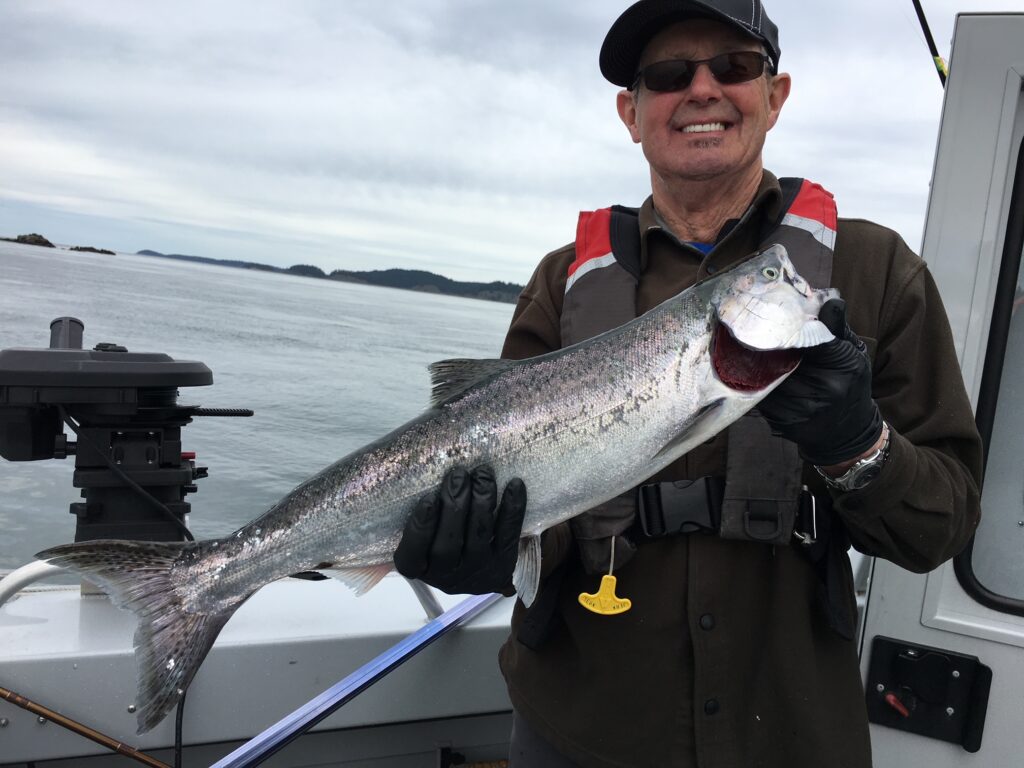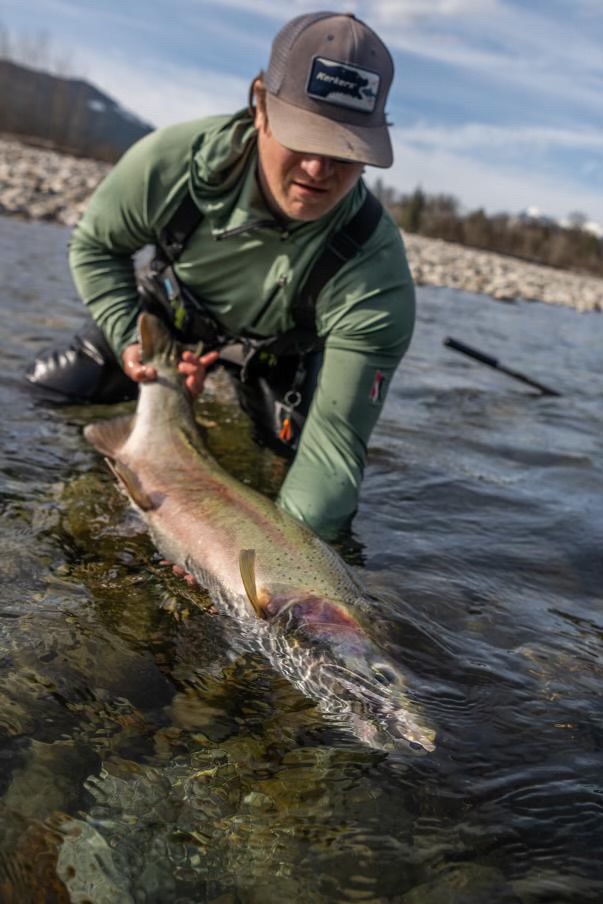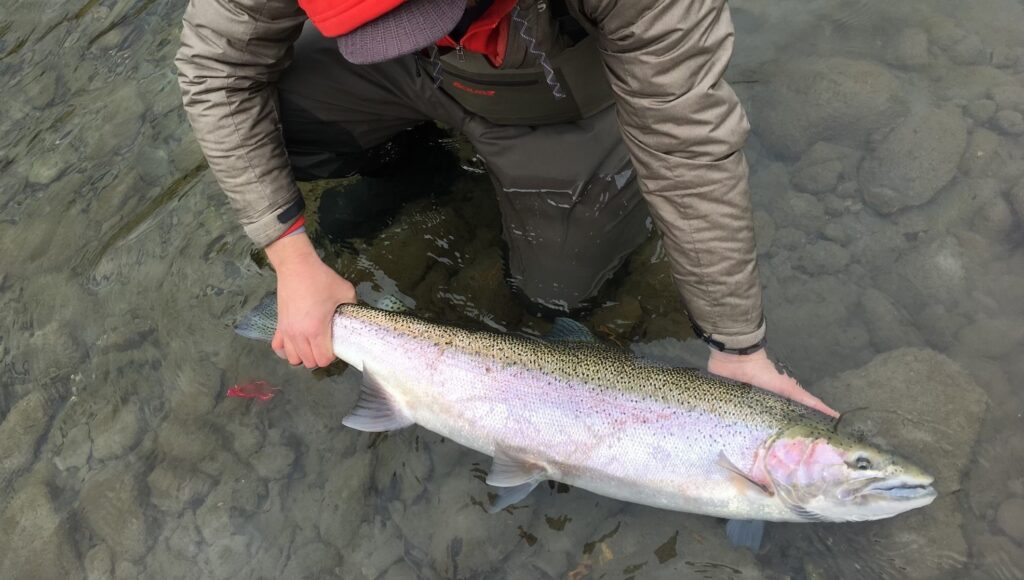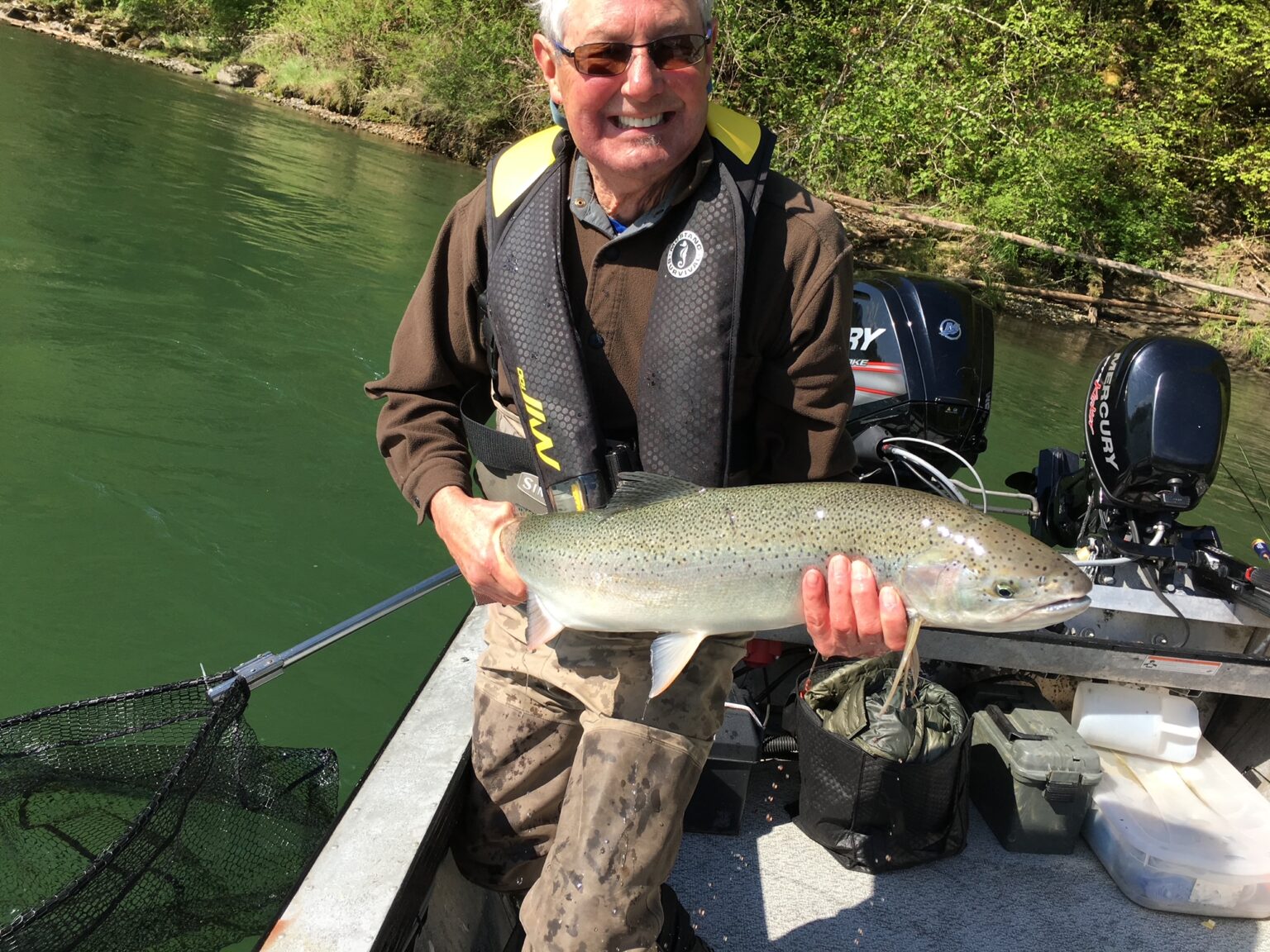Scott Schuyler of the Upper Skagit Indian Tribe could not hide his enthusiasm about the opening of the steelhead fishery this weekend on his ancestral watershed.
“I just can’t reiterate enough how significant it is to have the ability to have a fishery,” said Schuyler, the tribe’s natural resources policy representative.
Bellingham angler Tom Allen expressed similar excitement, describing the hooking of a steelhead as “quite an adrenaline rush.”
Fishery co-managers have approved a 10-week recreational season on the Skagit and Sauk Rivers starting Saturday, Feb. 3 in what is hailed as a model for catch-and-release management. The fishery has a two-fish hatchery steelhead retention limit; all wild steelhead must be immediately released. The season runs until April 17.
Managing Washington’s state fish highlights the complexity of preserving a natural resource when competing stakeholders want a piece of a dwindling population. Now, the long-term viability of the species depends on artful policymaking to appease state, federal, tribal, commercial and sports fishing interests for what some describe as the ultimate game fish.
While salmon command more attention, steelhead are equally important to the cultural fabric of Pacific Northwest fisheries.

“It was the only fish we had access to in the months the other species weren’t running,” Schuyler said.
Like many West Coast fisheries, runs of Skagit River steelhead have been decimated. Schuyler said they once ranged more than 30,000 fish annually. Overfishing and environmental degradation have obliterated the stock, leading to strong opinions about how to move forward.
In 2007, federal officials listed steelhead in the Puget Sound Distinct Population Segment as threatened under the Endangered Species Act. The designation has sharply restricted chances to catch wild steelhead, a sea-going rainbow trout that can reach up to 30 pounds. Some anglers argue that retaining a wild fish even when allowed harms conservation efforts.
Federal officials approved the 10-year Skagit River Steelhead Fishery plan in March 2023, which allows Washington Department of Fish and Wildlife (WDFW) and tribal co-managers to operate fisheries under strict guidelines. The National Oceanic and Atmospheric Administration Fisheries found the plan consistent with the Endangered Species Act.
Despite the efforts, Puget Sound steelhead returns were fewer than 5–10% of historical levels, WDFW reported in 2020. Co-managers closed the Skagit steelhead fishery in 2020 and 2022 because forecasts fell below the 4,000-fish threshold.
The current sports fishing season is six weeks longer than in 2023, with managers forecasting a run of 5,215 wild steelhead this year.
Beyond the catch-and-release program, the Sauk-Suiattle Indian Tribe, Swinomish Indian Tribal Community and Upper Skagit can harvest some fish.
Schuyler, who plans to take his daughter on the family drift boat this weekend, emphasized the importance of working toward restoring the steelhead population to previous levels.

He has witnessed bad outcomes with other species along the only river system in Washington that supports all five salmon species: chinook, chum, Coho, pink and sockeye. The Skagit River also is famous for its steelhead and bull trout fishing.
Schuyler said the tribe hasn’t fished for Skagit River chum since 2007. “And the last wild spring chinook fishery was 36 years ago,” he added.
Under the current agreement, recreational steelhead fishing is permitted Saturdays through Wednesdays on the Skagit from the Dalles Bridge at Concrete upstream to Cascade River Road in Marblemount. Anglers are allowed on the Sauk River from the mouth upstream to Darrington Bridge at Sauk Prairie Road.
Anglers can keep up to two hatchery steelhead — marked with a clipped adipose fin — but must immediately release all wild fish, which cannot be removed from the water. Regulations are listed on the WDFW website under emergency fishing rules.
The Skagit management program is different from the Nooksack River, where anglers fish for early-returning steelhead produced by the state-run Kendall Creek hatchery on the North Fork.
The state closed the hatchery steelhead runs early this year to allow fishing opportunities next fall and early winter. The early closure also minimizes impacts on the later-running wild steelhead, a protected species in the watershed. WDFW posts seasonal updates under the emergency fishing rules.
Despite the paltry numbers, steelhead remain dear to the sports fishing industry. They are called a fish of a thousand casts because of the challenge to land one.
“It’s nip and tuck because even in cold water those steelheads are so feisty,” said Allen, the Bellingham angler. “They’ll just run and run. It’s common to have three or four big runs.”
Steelhead, which average between 8 and 11 pounds, run in the summer and winter like chinook salmon. Most summer runs are east of the Cascades, according to WDFW.
Unlike salmon, steelhead can return to spawn more than once if they survive the perils of the sea. Anglers often rate steelhead by how many years they spend in the ocean, such as a one-salt fish or two-salt fish.

“They go back to the buffet and then come back again so that allows them to get even bigger,” Allen said. “The really big ones will be a five-salt fish.”
Not only do steelhead give a good fight, but recreational anglers are limited by gear restrictions, such as using only barbless hooks.
“It wouldn’t be any fun if it were too easy,” said Allen, who has pursued steelhead for three decades.
Even with the restrictions, co-managers estimate a 10% mortality rate from sports fishing. The steelhead are at risk when hooked in the tongue, eye or gills. Schuyler said wild steelhead also get worn down when caught multiple times to increase the chance of dying.
As a tribal elder, Schuyler is at the end of his run with steelhead fishing. “My body just is not where it was 20 years ago,” he said.
Allen, 74, echoed the sentiment: “Steelhead is not as attractive as it used to be. I feel colder than I used to.”
Both men have enjoyed robust runs in their lives. They are bonded, like almost all steelheaders, to protect a depleted species.
Allen endorses more hatchery fish to help boost the population. That includes hatchery-spawned wild fish known as “broodstock.”
Schuyler focuses on conserving a centerpiece of his tribe’s heritage by looking at the broader landscape.
“Every aspect of the ecosystem has a cultural significance,” he said. “When you get into it, it’s just not about fish. It’s about everything.”
Elliott Almond's outdoor column appears monthly. Email: elliottalmond4@gmail.com.




